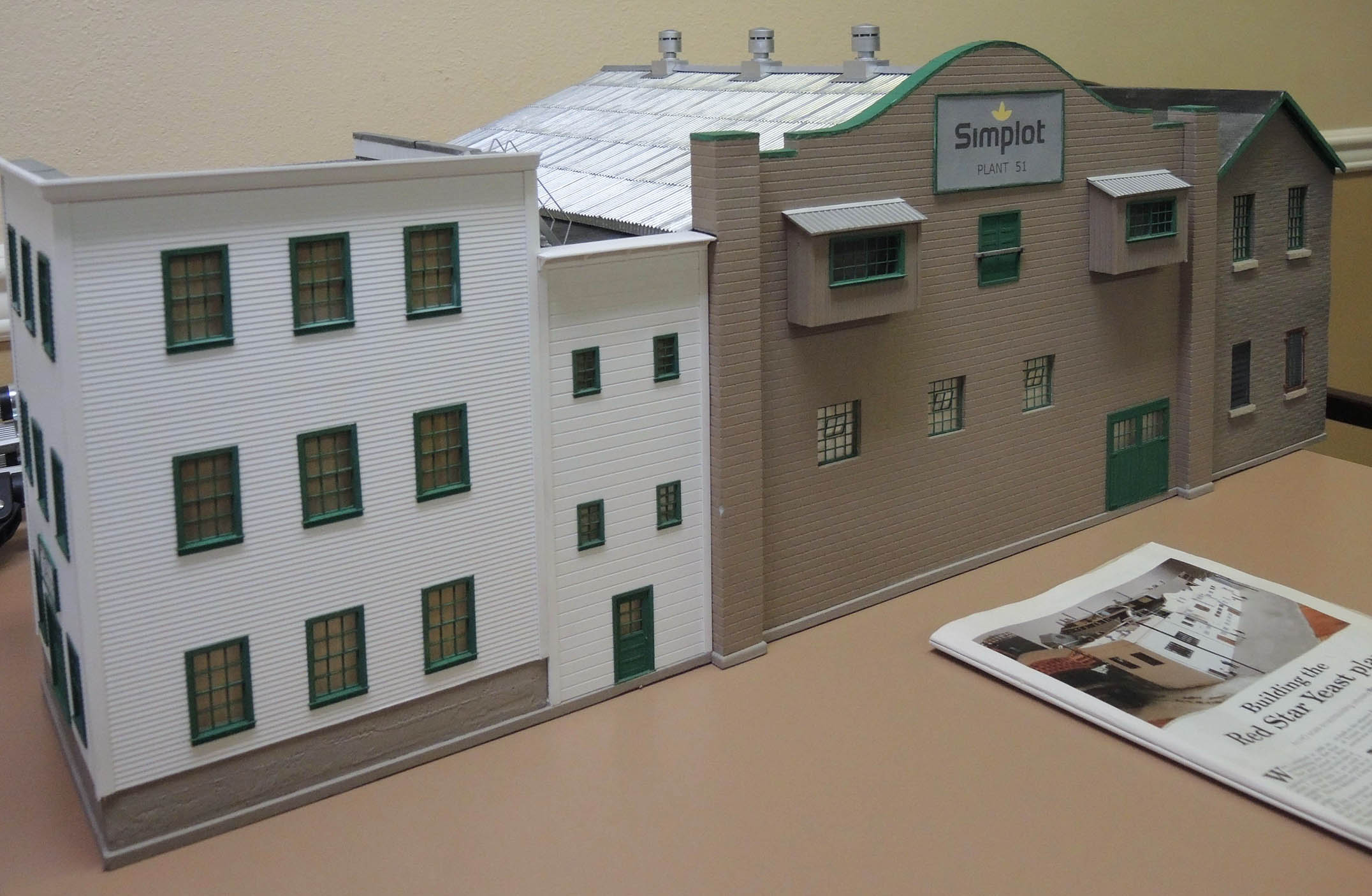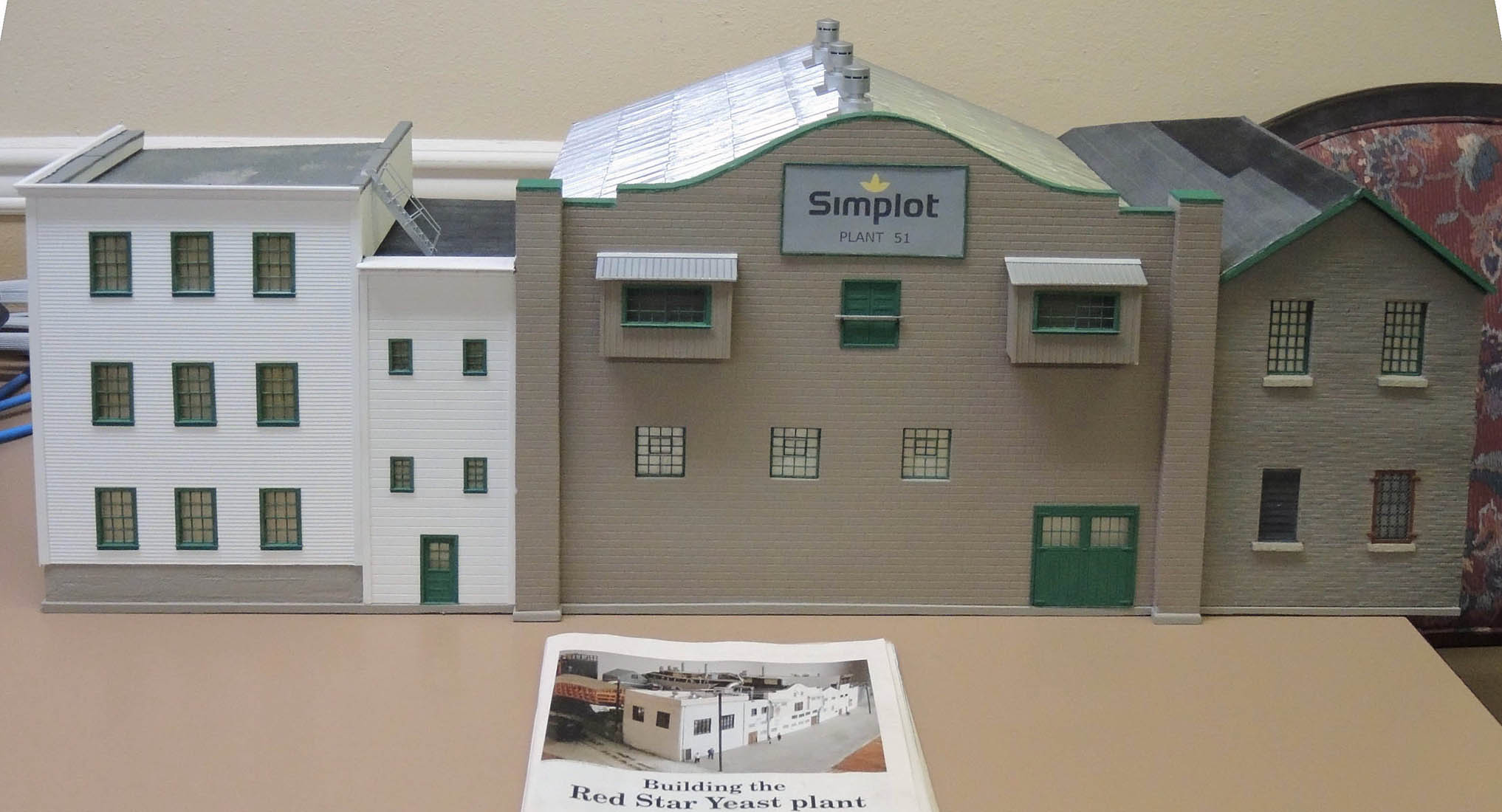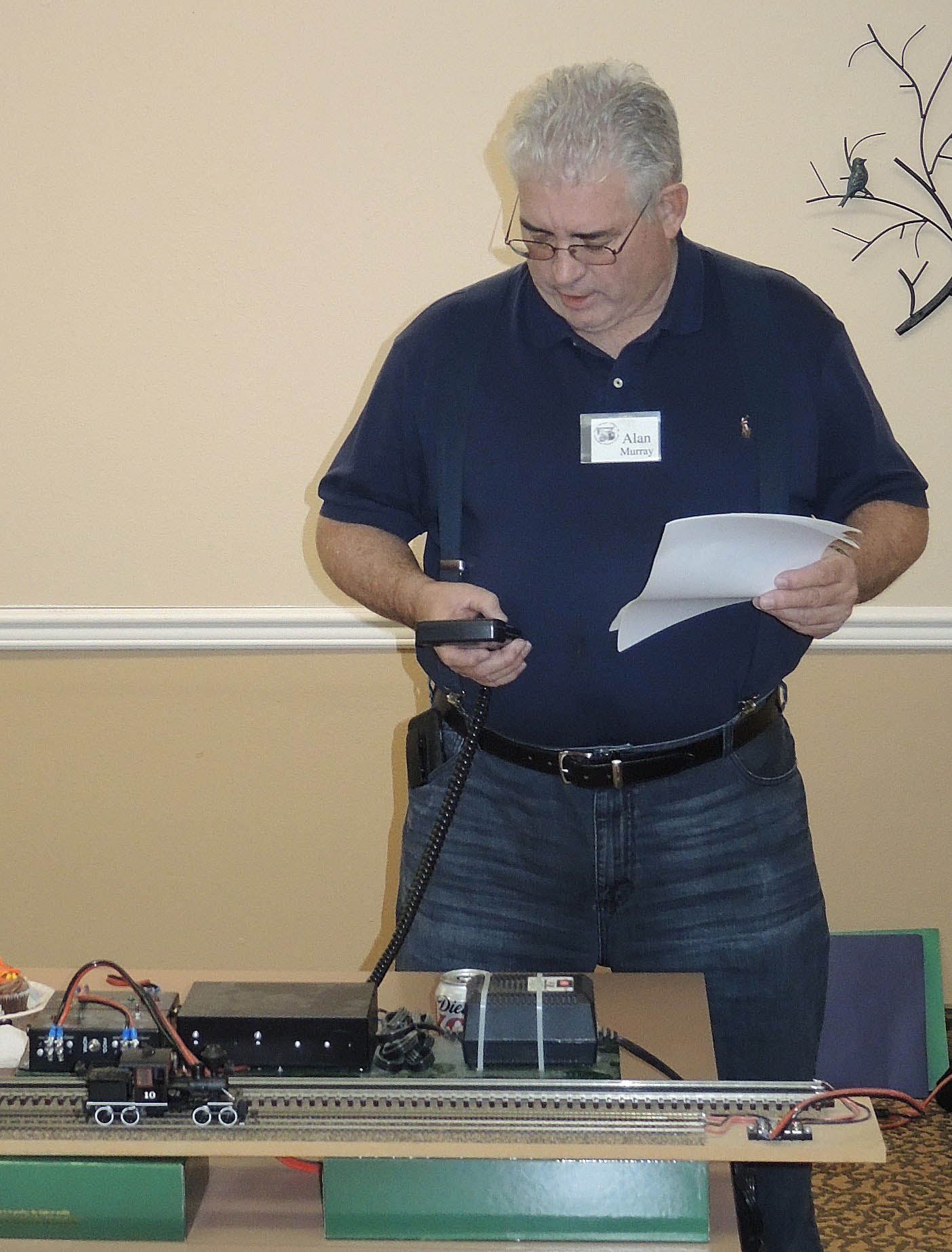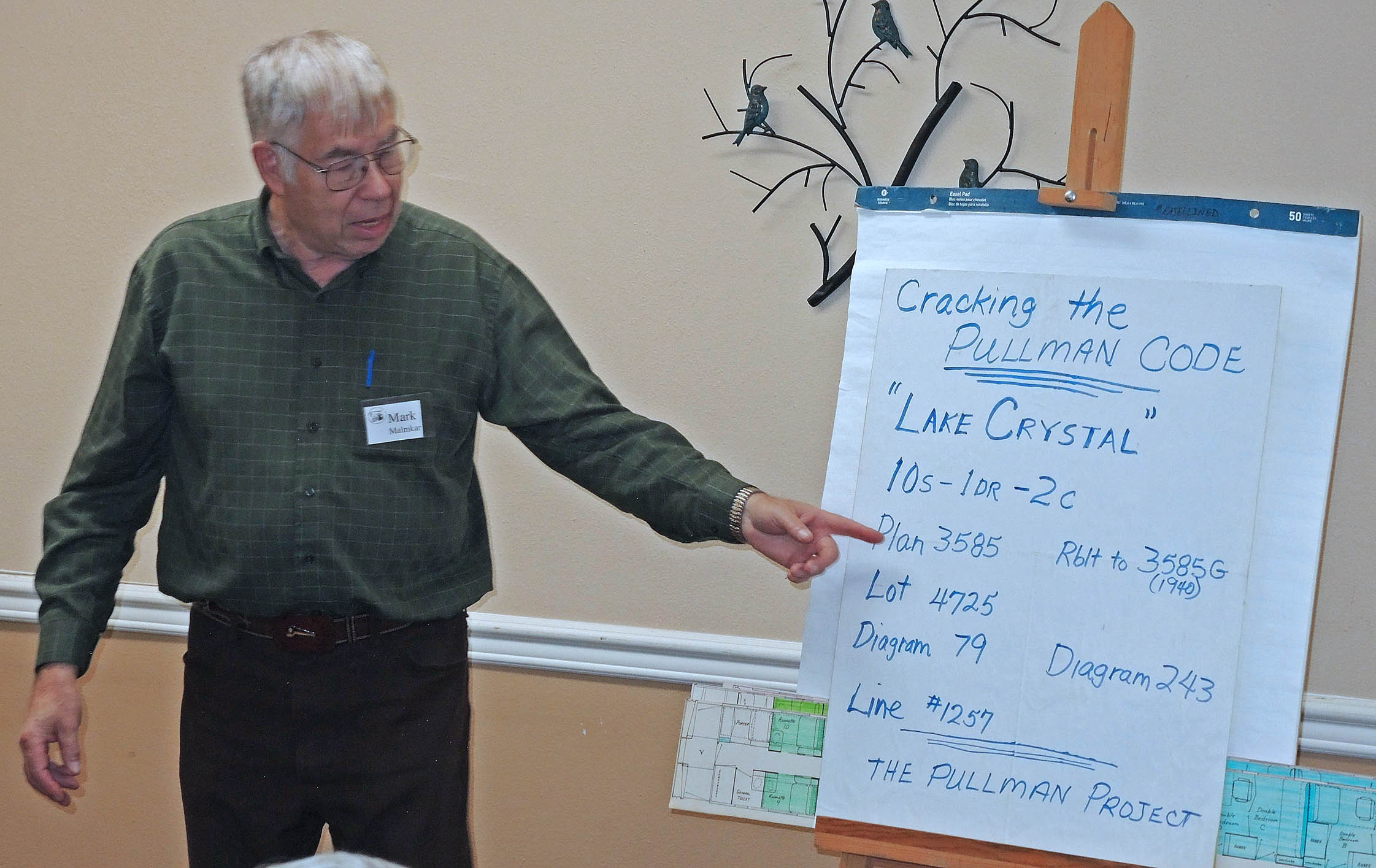Article and Photos by Rich Thom
Skagit Valley and Whidbey Clinic November Meeting
Cracking the Pullman Code
Clinic Chair Rich Blake welcomed 22 to our third clinic of the season. Rich highlighted upcoming calendar events including Jack Tingstad’s annual Thanksgiving weekend open house, Saturday and Sunday Nov. 25th and 26th, 10 to 4 both days. Anyone who hasn’t seen Jack’s HO-scale Cloud City & Western should consider taking advantage of this opportunity. Address: 508 NW Broadway Ave., Coupeville, Whidbey Island. Bring a donation for Coupeville’s Food Bank.
Rich also mentioned that the next clinic meeting (Dec. 13th) will be our (mostly) annual “Wassail” potluck at the usual meeting place, but beginning an hour earlier at 6:00pm. On the program will be an historical video from the Bellingham Railway Museum (www.bellinghamrailwaymuseum.org).
Ray Vaughn led off the evening with one of the larger “show and tell” items to be lugged up the stairway at the Summerhill facility. Ray’s first scratch-building project, this O-scale model (Figs 1, 2) of a Simplot plant used an article in Railroad Model Craftsman by Bruce Feld as inspiration. The four buildings cover a hole in a curved backdrop of Ray’s layout; the backside of the structure had to be carefully built to match the curvature and be readily movable as well.
All of the buildings have a ¼” foam core backing.
Ray used the following materials and methods to produce this fine model.
In both Figs 1 and 2, buildings are numbered from 1 on the right, to 4 on the left.
• Foundations: DAP joint compound with board pattern pressed in
• Siding materials:
– Bldg. 1 ‘Plastruct’ O-scale dressed stone block
– Bldg. 2 ‘Model Builders Supply Line’ concrete block
– Bldg. 3 ‘Evergreen Scale Models’ 0.250” spacing V-groove
– Bldg. 4 ‘Evergreen’ 0.100” spacing clapboard
• Roofs:
– Bldgs. 1 and 3 ‘3M Micropore’ paper tape colored with alcohol/ink
– Bldg, 2 ‘Paper Studio’ corrugated cardboard painted with ‘Rust-Oleum’ metallic aluminum
– Bldg. 4 150-grit sandpaper soaked with thinned acrylic paint and very fine scenic sand sprinkled on
• Bldg. 2 details:
– Enclosed balconies–parts from a ‘Grandt Line Products’ shed; ‘Rix Products’ roof vents
• Windows, doors, roof ladder from ‘Tichy Train Group’
• Cornices—wood; doll house trim on bldg. 4
Wow, if this is Ray’s first scratch-building effort, we look forward to seeing his second!
Next up, Alan Murray described some sound programming details, specifically setting up, and options for, the “auto sound configuration,” CV 198.
Alan demonstrated, with an On30 Heisler, the various CV settings to get automatic whistling when setting off in forward and reverse, at grade crossings, while retaining brake squeal and other sound effects. You can do this “the hard way” with a throttle, or much more easily with JMRI Decoder Pro.
What’s a 10-1-2? A 12-1? Modelers who love running passenger trains—or frequent train travelers—will know that these codes describe the configuration of the sleeping spaces in sleeping cars: the floor plan. It was all begun by the Pullman Company, and the huge number of car designs produced by this landmark car builder (and sleeping car owner/operator) required a numeration system to keep track of them all. This was the subject of Mark Malmkar’s talk this evening: Cracking the Pullman Code.
The “10-1-2” is the most familiar part of the system, describing the sleeping accommodations of the car, in this case a 10 section – 1 drawing room – 2 compartment floor plan. (Sections are the long-gone—at least in the U.S.—upper and lower berths with curtains along the aisle for privacy.) During the heavyweight era, Mark said, more “12-1” cars were built than any other, 12 section – 1 drawing room. The bulk of the cars in the streamline era were “10-6”—10 roomette – 6 double bedrooms. The terminology is still being used today. For example, Amtrak Superliners are 14-5-1+1 handicap, and Viewliners 12-3+1 handicap.
But keeping track of the designs, batches in which they were built, rebuilds and other details required far more than just the accommodation arrangement. Mark used as an example a car named “Lake Crystal” whose full description in the code is:
• 10s-1dr-2c – Sleeping accommodation as just described
• Plan 3585 – Pullman plan for the car as built in 1923. There were six series of numbers. Plan numbers 3410 through 3999 denoted steel cars built from 1923 to 1930
• Lot 4725 – Pullman lot number, included 47 cars. In the heavyweight era, Pullman usually built the cars in batches of identical cars.
• Diagram 79 – Accommodation diagram. These diagram forms, or cards, were used by conductors, porters and reservation agents to assign car space to ticket purchasers.
• Line #1257 – The car routing number for use by the accounting department for financial and contract purposes. For example, #1257 might indicate a sleeping car on the Union Pacific between Omaha and Ogden, westbound.
• Plan 3585G – Pullman plan as rebuilt in 1940. Rebuilds where interior appointments or windows were changed, but not the basic floor plan, were assigned letter suffixes.
Mark passed around several large floor plans he drew of common configurations, and a handout containing 25 floor plans for Pullman section sleepers; Pullman all-room sleepers; rebuilds; and lightweight sleepers. A handy reference, and interesting and informative talk!





No Comments Yet